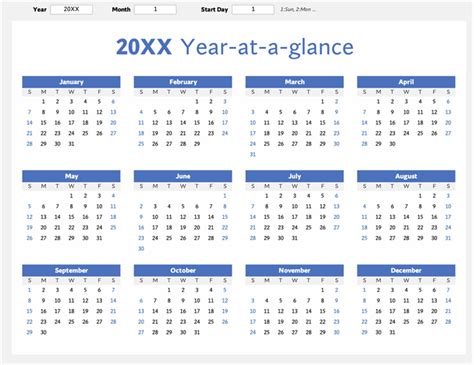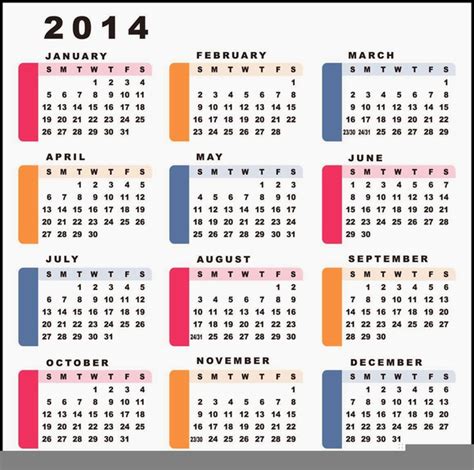
Orthodox Christian Calendar
The Orthodox Christian Calendar
The Orthodox Christian calendar is a liturgical calendar that governs the timing of feasts, fasts, and Scriptural readings within the Orthodox Church. While sharing historical roots with the Western Christian calendar, it has evolved along a distinct path, retaining unique features that shape the spiritual rhythm of Orthodox believers worldwide.
Two Calendars: Julian and Revised Julian
A key characteristic is the existence of two variations: the Julian calendar (“Old Calendar”) and the Revised Julian calendar (“New Calendar”). The Julian calendar, introduced by Julius Caesar, is currently 13 days behind the Gregorian calendar (the standard civil calendar). Some Orthodox Churches (e.g., Russian, Serbian, Georgian, Jerusalem) continue to observe the Julian calendar for all liturgical purposes. Others, known as New Calendarists (e.g., Constantinople, Greek, Romanian), adopted a revised version of the Julian calendar in the 20th century. This Revised Julian calendar aligns with the Gregorian calendar until the year 2800. For most fixed feasts (those that occur on the same date each year, such as Christmas on December 25th), New Calendarists celebrate them according to the Gregorian date, while Old Calendarists celebrate them 13 days later.
Pascha: The Cornerstone
Despite these differences in fixed feast dates, all Orthodox Churches calculate Pascha (Easter) according to the same rules established by the First Ecumenical Council in Nicaea (325 AD). Pascha is celebrated on the first Sunday after the first full moon following the Spring Equinox, provided that the full moon occurs after the Jewish Passover. This calculation often results in Pascha being celebrated later than in the Western Christian tradition. The entire liturgical year revolves around the date of Pascha, influencing the dates of Great Lent, Ascension, Pentecost, and other movable feasts.
Cycles of Feasts and Fasts
The Orthodox liturgical year is structured around a series of interconnected cycles. The annual cycle culminates in Pascha, the “Feast of Feasts,” and is preceded by Great Lent, a period of intense fasting and spiritual preparation. The twelve Great Feasts celebrate significant events in the lives of Christ and the Theotokos (Virgin Mary). These include the Nativity of the Theotokos, the Entry of the Theotokos into the Temple, the Annunciation, the Nativity of Christ, the Theophany (Epiphany), the Presentation of Christ in the Temple, the Transfiguration, the Dormition of the Theotokos, and others. In addition to these major feasts, numerous other commemorations honor saints, angels, and specific events in salvation history.
Fasting plays a crucial role in Orthodox spiritual life. Besides Great Lent, other significant fasting periods include the Nativity Fast (Advent), the Apostles’ Fast, and the Dormition Fast. Wednesdays and Fridays are typically observed as fast days throughout the year (except during certain festal periods). These fasting periods involve abstaining from meat, dairy, eggs, fish, and sometimes oil and wine, encouraging self-discipline and spiritual focus.
Readings and Hymns
Each day in the Orthodox calendar is associated with specific Scriptural readings (epistles and gospels) and hymns that are chanted or sung during the services. These readings and hymns are carefully selected to reflect the meaning of the feast or commemoration being celebrated and to guide the faithful through a process of spiritual reflection and understanding.
A Living Tradition
The Orthodox Christian calendar is more than just a system of dates; it is a living tradition that shapes the spiritual lives of millions of Orthodox Christians around the world. It provides a framework for worship, prayer, and spiritual growth, connecting believers to the historical events of salvation and the enduring presence of God.
 1754×1240 calendar calendarbest from www.calendar.best
1754×1240 calendar calendarbest from www.calendar.best
 1760×1360 printable year calendar google docs eps illustrator jpg from www.template.net
1760×1360 printable year calendar google docs eps illustrator jpg from www.template.net
 818×546 amp calendar calendar twelve months year from www.ampsoft.net
818×546 amp calendar calendar twelve months year from www.ampsoft.net
 2560×1889 printable calendar word yearly calendar template monthly calendar from www.pinterest.fr
2560×1889 printable calendar word yearly calendar template monthly calendar from www.pinterest.fr
 1200×1200 floral calendar design vector floral calendar calendar from pngtree.com
1200×1200 floral calendar design vector floral calendar calendar from pngtree.com
 512×512 calendar apps google play from play.google.com
512×512 calendar apps google play from play.google.com
 1755×1240 printable weekly calendar landscape gusty kylynn from mariavmorissa.pages.dev
1755×1240 printable weekly calendar landscape gusty kylynn from mariavmorissa.pages.dev
 1760×1360 cpcc calendar template blank march from chineselunarnewyearcalendar2024.pages.dev
1760×1360 cpcc calendar template blank march from chineselunarnewyearcalendar2024.pages.dev
 900×900 calendar from www.lakecofair.com
900×900 calendar from www.lakecofair.com
 1086×1536 holiday calendar usa cordi jacinthe from emiliqdeeanne.pages.dev
1086×1536 holiday calendar usa cordi jacinthe from emiliqdeeanne.pages.dev
 1024×1326 printable yearly calendar calendar holidays from utpaqp.edu.pe
1024×1326 printable yearly calendar calendar holidays from utpaqp.edu.pe
 2420×1870 march calendar december calendar from calendarpictures2024.pages.dev
2420×1870 march calendar december calendar from calendarpictures2024.pages.dev
 1240×1755 printable calendar page word march calendar from 2024blankcalendarfillable.pages.dev
1240×1755 printable calendar page word march calendar from 2024blankcalendarfillable.pages.dev
 2420×1870 printable calendar glance image from imagetou.com
2420×1870 printable calendar glance image from imagetou.com
 3060×2384 printable calendar from data1.skinnyms.com
3060×2384 printable calendar from data1.skinnyms.com
 3300×2550 printable calendar page holidays printable from tupuy.com
3300×2550 printable calendar page holidays printable from tupuy.com
 550×407 calendar students britannica kids homework from kids.britannica.com
550×407 calendar students britannica kids homework from kids.britannica.com
 1050×1074 static calendar single time zone propose scholars from www.theepochtimes.com
1050×1074 static calendar single time zone propose scholars from www.theepochtimes.com
 3300×2550 july june calendar printable march calendar from farmersalmanaccalendarsnearme2024.pages.dev
3300×2550 july june calendar printable march calendar from farmersalmanaccalendarsnearme2024.pages.dev
 1760×1360 editable march calendar templates psd from www.template.net
1760×1360 editable march calendar templates psd from www.template.net
 600×776 printable yearly calendar calendar week numbers from calendar2024augustskny.pages.dev
600×776 printable yearly calendar calendar week numbers from calendar2024augustskny.pages.dev
 1080×1080 calendar printable template paper trail design from informacionpublica.svet.gob.gt
1080×1080 calendar printable template paper trail design from informacionpublica.svet.gob.gt
 1760×1360 calendar word format printable forms from printableformsfree.com
1760×1360 calendar word format printable forms from printableformsfree.com
 1240×1755 january april printable calendar from www.customcalendarmaker.com
1240×1755 january april printable calendar from www.customcalendarmaker.com
 1200×1200 desktop calendar computer desktop kenneth silveira from kennethjsilveira.pages.dev
1200×1200 desktop calendar computer desktop kenneth silveira from kennethjsilveira.pages.dev
 2420×1870 monthly calendar blank printable from data1.skinnyms.com
2420×1870 monthly calendar blank printable from data1.skinnyms.com
 3082×2388 fill date printable calendar calendar printable from calendar.udlvirtual.edu.pe
3082×2388 fill date printable calendar calendar printable from calendar.udlvirtual.edu.pe
 600×450 yearly mini calendar template printable templates from www.calendarlabs.com
600×450 yearly mini calendar template printable templates from www.calendarlabs.com
 1755×1240 printable calendar monthly lines dawn esmaria from elwiraqlarina.pages.dev
1755×1240 printable calendar monthly lines dawn esmaria from elwiraqlarina.pages.dev
 3300×2550 printable calendar page from old.sermitsiaq.ag
3300×2550 printable calendar page from old.sermitsiaq.ag
 1755×1240 year glance calendar virginia hill from virginiahhill.pages.dev
1755×1240 year glance calendar virginia hill from virginiahhill.pages.dev
 1000×605 types calendars latest news stories from calendarcalendar.com
1000×605 types calendars latest news stories from calendarcalendar.com
 1024×533 calendar template excel create simple dynamic calendar from www.excelmojo.com
1024×533 calendar template excel create simple dynamic calendar from www.excelmojo.com
 32×32 calendars guide locating day year from www.sldirectory.com
32×32 calendars guide locating day year from www.sldirectory.com
 474×326 printable year calendar from printabletemplatecalendar.pro
474×326 printable year calendar from printabletemplatecalendar.pro
 3300×2550 printable july calendar printable templates protal from portal.perueduca.edu.pe
3300×2550 printable july calendar printable templates protal from portal.perueduca.edu.pe
 1094×586 editable calendar templates from homeprintables.com
1094×586 editable calendar templates from homeprintables.com
 675×520 calendars officecom from templates.office.com
675×520 calendars officecom from templates.office.com
 700×996 calendar wikipedia from en.wikipedia.org
700×996 calendar wikipedia from en.wikipedia.org
 580×580 printable annual calendar template printable templates from cholonautas.edu.pe
580×580 printable annual calendar template printable templates from cholonautas.edu.pe
 2048×1092 connect calendar google home calendar from www.calendar.com
2048×1092 connect calendar google home calendar from www.calendar.com
 900×600 calendars office provost uw green bay from www.uwgb.edu
900×600 calendars office provost uw green bay from www.uwgb.edu
 600×595 calendar desktop images clkercom vector clip art from www.clker.com
600×595 calendar desktop images clkercom vector clip art from www.clker.com
 1035×800 printable calendar printable monthly calendars from www.vertex42.com
1035×800 printable calendar printable monthly calendars from www.vertex42.com
 870×400 evolution calendar calendar today from tiny.heroinewarrior.com
870×400 evolution calendar calendar today from tiny.heroinewarrior.com
 2200×1700 calendar pages printables printablee printable blank from carlybooth7.blogspot.com
2200×1700 calendar pages printables printablee printable blank from carlybooth7.blogspot.com
 2550×3300 calendar january february march calendar printable from calendar.udlvirtual.edu.pe
2550×3300 calendar january february march calendar printable from calendar.udlvirtual.edu.pe
 2481×3508 calendar january february calendarsu from free-calendar.su
2481×3508 calendar january february calendarsu from free-calendar.su
 1280×720 creat calendar customize print from www.denizen.io
1280×720 creat calendar customize print from www.denizen.io
 1497×1920 wall calendar template desk calendar design week start from www.vecteezy.com
1497×1920 wall calendar template desk calendar design week start from www.vecteezy.com
 900×1165 fillable calendar printable storm sibley from karonvofilia.pages.dev
900×1165 fillable calendar printable storm sibley from karonvofilia.pages.dev